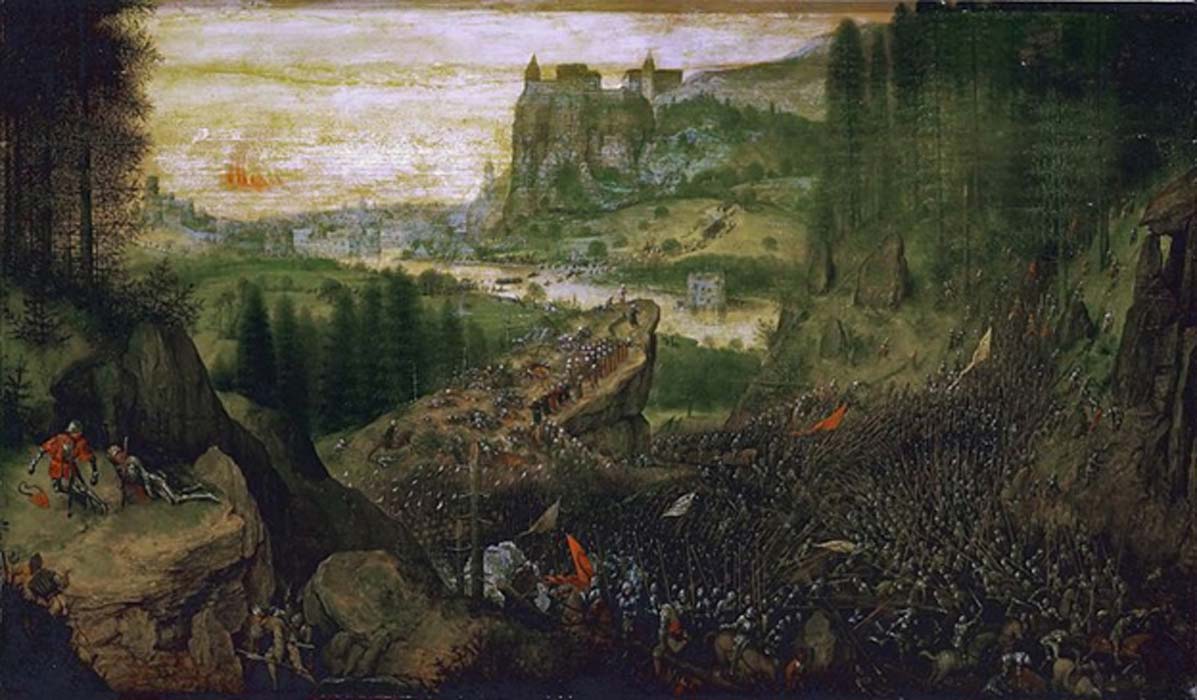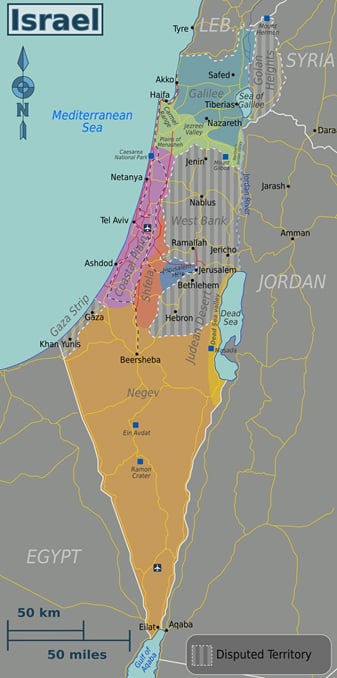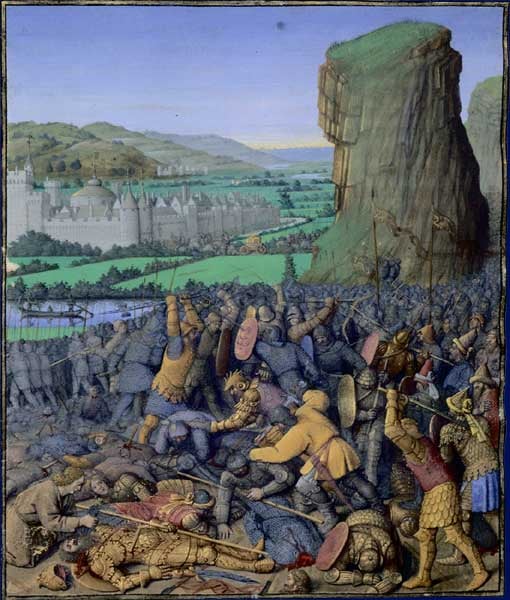
The Battle of Mount Gilboa: King Saul’s Defeat and Death
The Battle of Mount Gilboa (circa 1050 BC) was a turning point in Israel’s military and political history. The Israelite and Philistine armies would once again engage in exchanging bloodshed. However, the reason as to why the Philistines marched into Israelite territory is uncertain. Chapters 29:1-2 and 31:1-3 of I Samuel are silent concerning why the Philistines assembled an army and entered Israelite territory. It can be speculated that the Philistine invasion aimed to take control of the trade route that passed through their lands along the coast and through the Israelite-controlled Jezreel Valley. This implied that the portion of the trade route passing through Israelite lands, which is a major artery connecting the north with Egypt further to the south, was a dangerous route to traverse. Merchants complained that goods being exported or imported did not arrive at their final destinations. In other words, the local Israelites were raiding the trade route. While forcefully taking control of the trade route would have alleviated the pressure on commercial traffic, it also allowed the Philistines to open the agricultural market in the region.

Map indicating Mount Gilboa and the Jezreel Valley in green (CC BY-SA 3.0)
Positioning the Troops
It was also during this time that David, the soon to be king of Israel, was away fighting the Amalekites. Besides David being on King Saul’s mind, he now had to prepare to battle the Philistines after receiving information from his spies operating in Philistia of their intentions to confiscate the Jezreel Valley. The Philistine army assembled near the coast at Aphek, which is roughly 35 to 40 miles (56.32 – 64.37 kilometers) south of Mount Moreh. Once assembled, the Philistines would move parallel with the Judean ridge until they came to Carmel mountain range, which they would cross using one of three passes. The Philistine commanders understood that if they were to take the southern pass, which would have been the faster route across the plain of Dothan, they would risk being ambushed because of its proximity to Judea and if they took the northern pass, it would take much longer to reach their target. Therefore, they probably took the middle pass, which provided great cover due to the steep hills and woods. Known as the Wadi Ara, the pass leads into the Jezreel Valley. It also provided further security since the Philistine fortress of Megiddo was nearby.
After passing through the Wadi Ara, the Philistine army passed Megiddo and made their way to Shunem where they camped on the southern slope of Mount Moreh. Additional reinforcements joined them from nearby Beth-shean. As the Philistines settled into position, Saul’s army moved along the Judean ridge and positioned on Mount Gilboa. By keeping to the ridge, the Israelites remained concealed while observing the enemy, meantime avoiding the Philistine chariots. Even though Saul positioned the bulk of his forces at Mount Gilboa, he strategically placed some forces forward along the slope, for I Samuel 29:1 states: “Israel camped by the spring in Jezreel,” but he possibly positioned these units at the spring of Harod.
Assessing the battlefield from a military point of view, Saul had the upper hand. He was in a good position to observe the enemy forces, relay orders to his battlefront units below on the slopes, he had a natural defense to stop chariot attacks and the ability to counter any frontal assault.

Bataille de Gelboé by Jean Fouquet (1420) (Public Domain)
The Bible provides scant detail as to how the battle played out. The Philistines had an idea about the location of the enemy’s position, but the Israelites had not revealed themselves. Filled with trepidation both armies waited, until Philistine scouts located the small detachment of Israelites along the northern slope. Once the small Israelite detachment realized they had been spotted, they speedily sent word to Saul. Saul, commanding the bulk of the forces, decided in a bold move, to parade his forces along the top of the ridge for all the Philistines to see.
Charge!
Philistine commanders immediately gave the orders for their heavy infantry forces to muster into battle formations and marched towards the slopes of Mount Gilboa. The Philistine strategy was to orchestrate a three-prong simultaneous attack from the north, east and west. This was not only to put pressure on the Israelite lines, but also to keep them occupied long enough for the Philistine chariots to reach the summit of Gilboa. Before the battle commenced, the Philistine commanders had carefully been scouting the area and discovered the best way to get their chariots to the summit of Gilboa, was through the village of Gina. Gina is located near the southern slopes of Gilboa, which provided a gentle climb to the summit.




